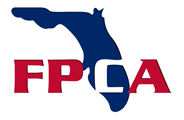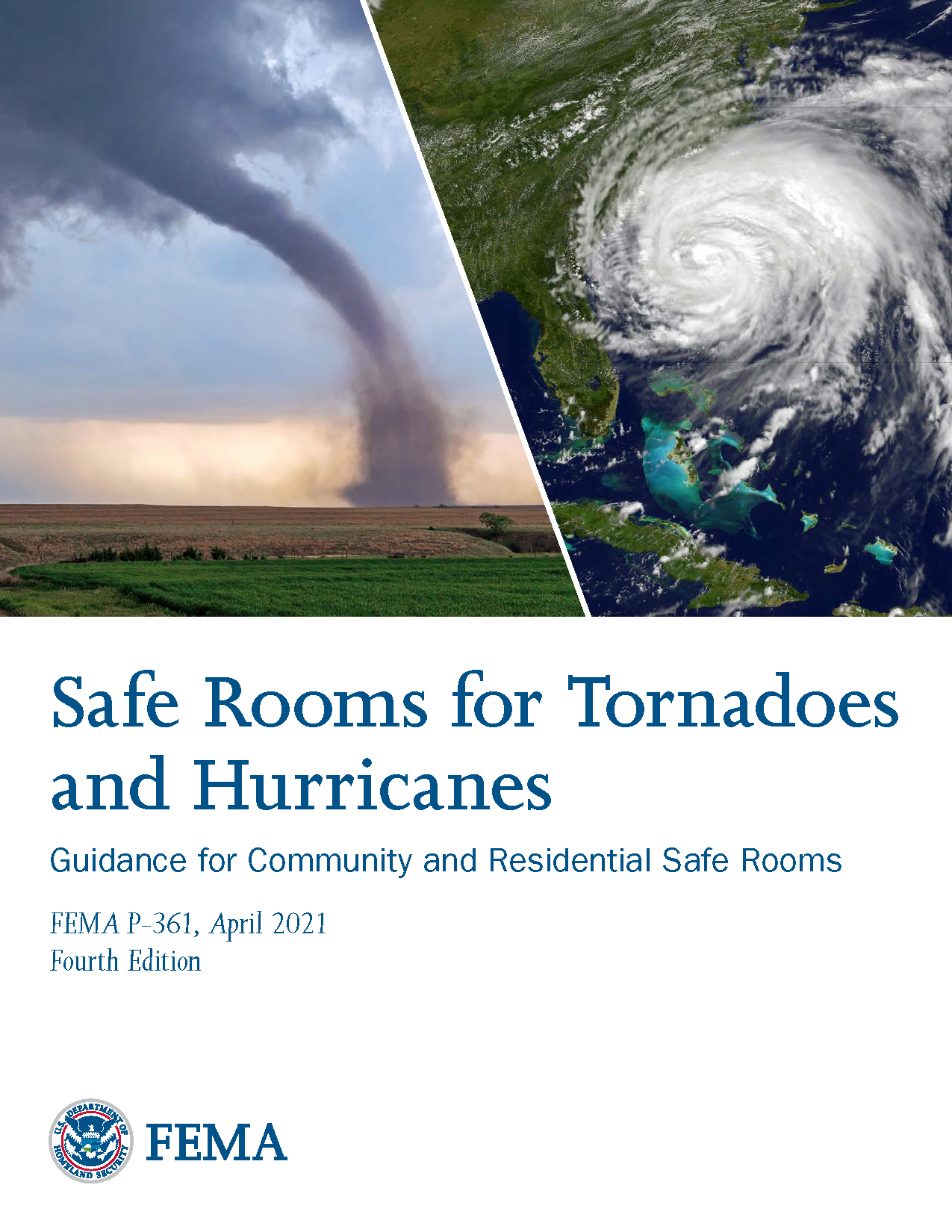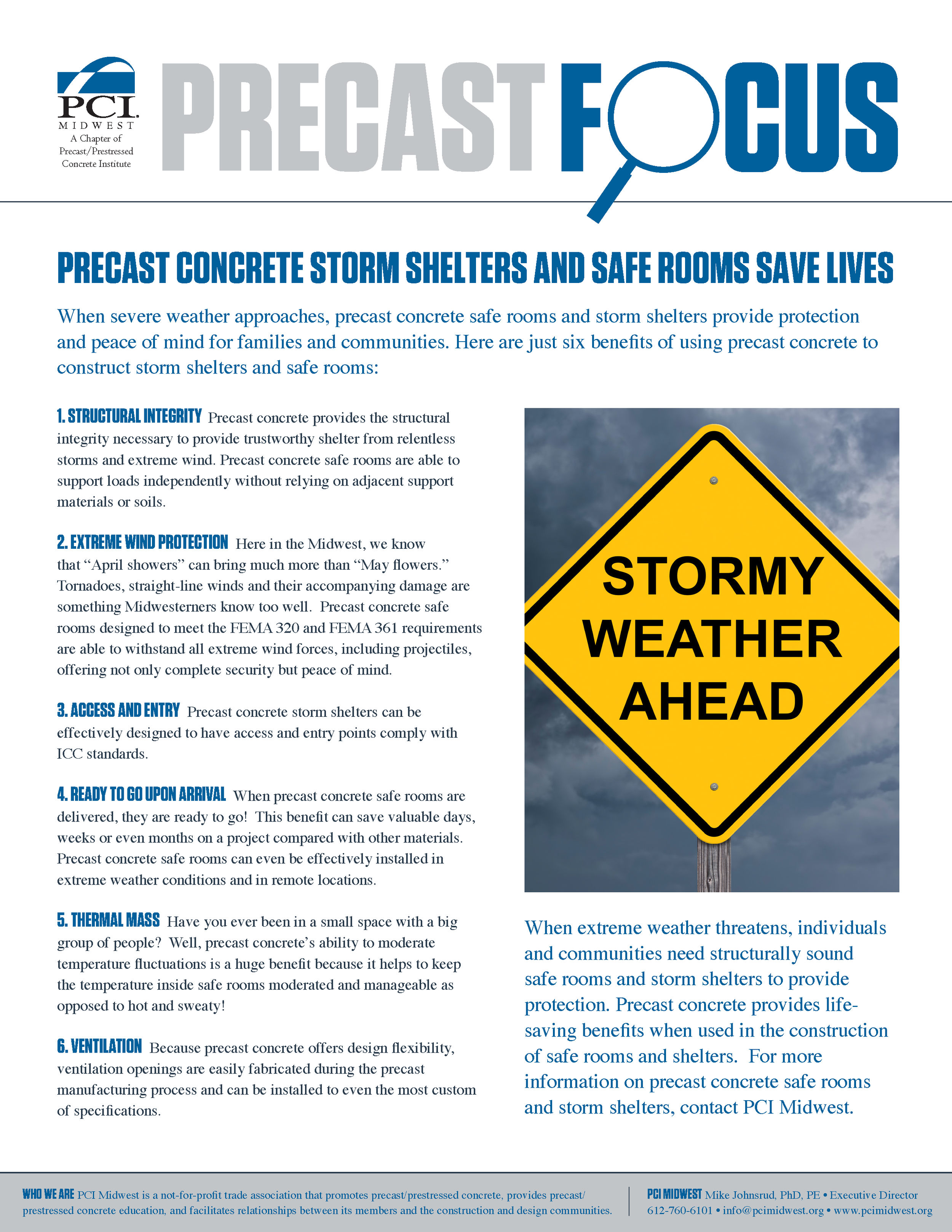Precast concrete can be used at the most basic design level to meet all FEMA P-361 criteria for safe rooms and storm shelters. FEMA guidelines are more stringent than other building codes and include requirements for almost complete protection for occupants from wind and debris during extreme weather. The level of wind speed FEMA has assigned to the overall safety of a structure is 250mph winds. Precast concrete already meets this guideline and has been proven effective against extreme weather events.
Precast storm shelters serve the residential market, but to a larger degree they are used in public projects such as military bases, universities, parks, K-12 schools, and business campuses. The beauty of a precast storm rated structure lies in its ability to fulfill a daily purpose and then serve as a protective shelter during harsh weather events.
PCI and FEMA have compiled technical resources for designers which answer common questions regarding precast storm shelters and outline guidelines for achieving FEMA rated buildings.
PCI highlighted FEMA storm shelter requirements and how precast meets those needs in the following Ascent magazine article. Read the full story below here.
Current FEMA P-361 guidelines can be viewed here.
PCI Midwest compiled a precast concrete storm shelter information sheet that expands on the benefits of precast shelters. View your copy here.
Precast concrete shelters offer numerous benefits to owners/occupants aside from protection against extreme weather. As a construction material produced entirely offsite in a quality control environment, precast concrete ensures the highest quality of each manufactured component on a timeline that isn’t slowed due to weather or onsite obstacles that typically plague traditional building materials. .
Precast concrete is resistant to rust, rot, fire, pests, and environmental hazards. Unlike metal or wood, a precast shelter won’t rust or rot when placed in the ground for an extended period of time which means its structural integrity is not compromised. In the event of fire either inside or outside the shelter, precast is fire resistant and aids in both compartmentalizing the blaze and providing more time for first responders to access the structure safely. Precast concrete structures also offer additional protection from mildew in harsh coastal climates.
Concrete offers a naturally durable, strong material that withstands the elements. Precast storm shelters can be designed to provide decades of protection without owners and occupants having to worry if it will fail when it is needed most. Precast is low maintenance and requires less future repairs than other building materials resulting in less time and money spent on upkeep.
PCI and FPCA producers are able to design and construct multi-use precast concrete structures that withstand 250 mph wind speeds while serving the community with aesthetically pleasing designs.
Examples of FPCA producer Gate Precast’s work on several gymnasiums that are used as storm shelters include D’Iberville High School in Gulfport, MS and Life School in Carrolton, TX. The Life School is a total precast building that combines architectural and structural components to create a safe and durable enclosure system. Gate Precast has also provided precast to military bases including Camp Shelby in MS which is used for housing during hurricane events.
Read about these and other precast storm shelters in PCI’s Ascent magazine.









